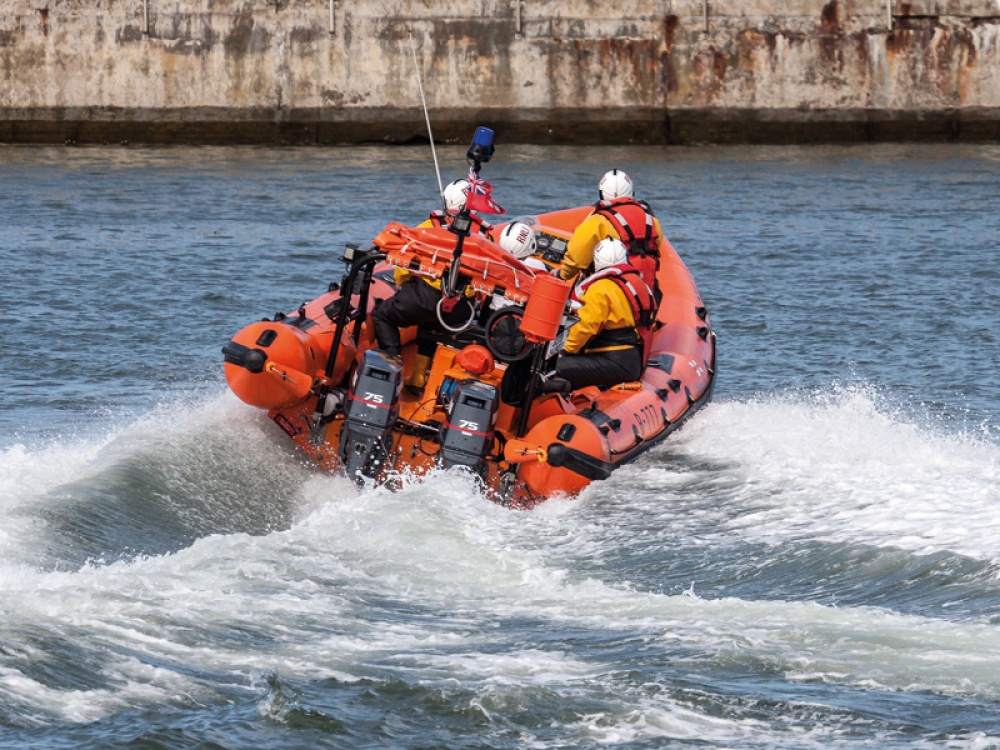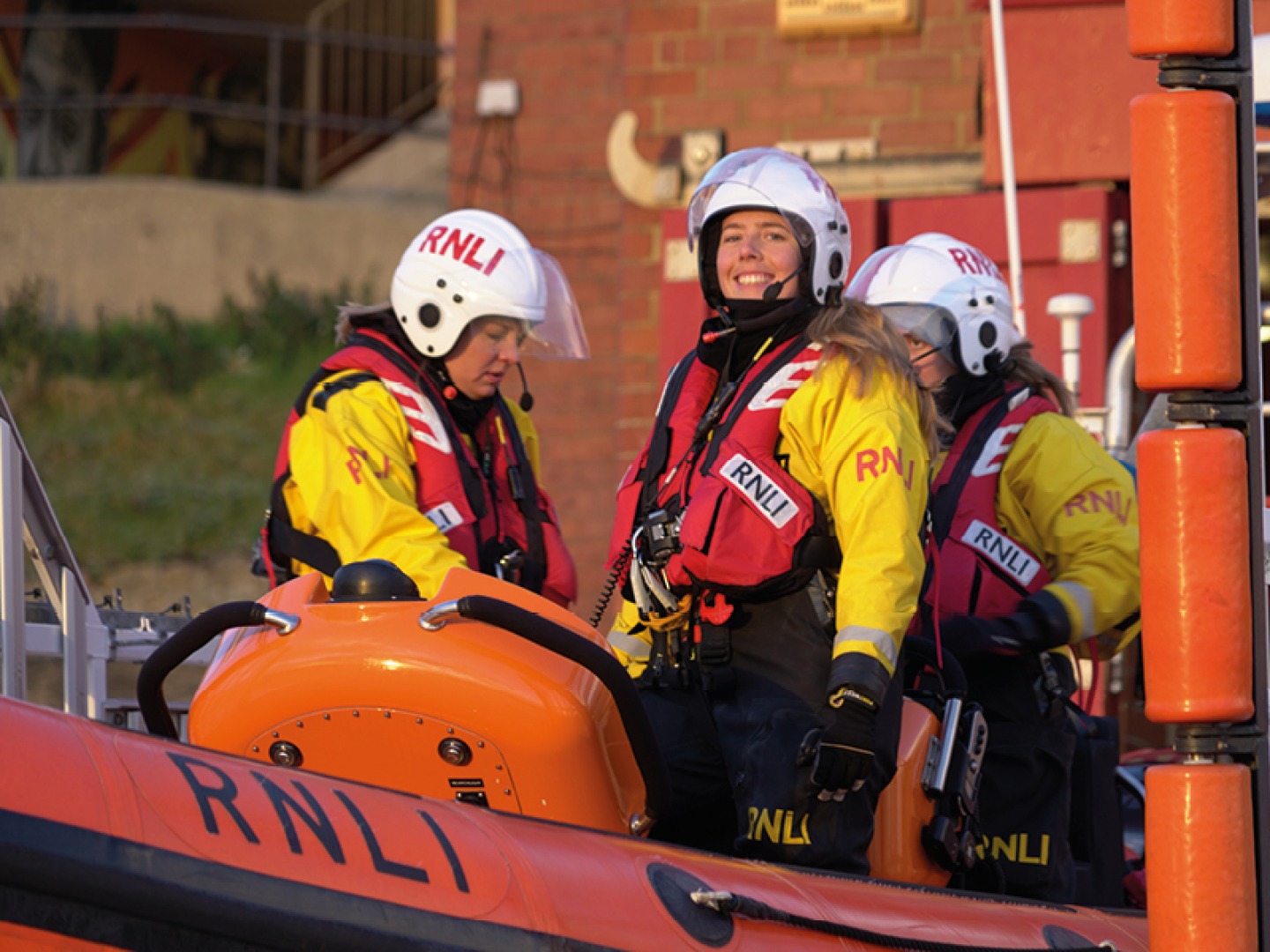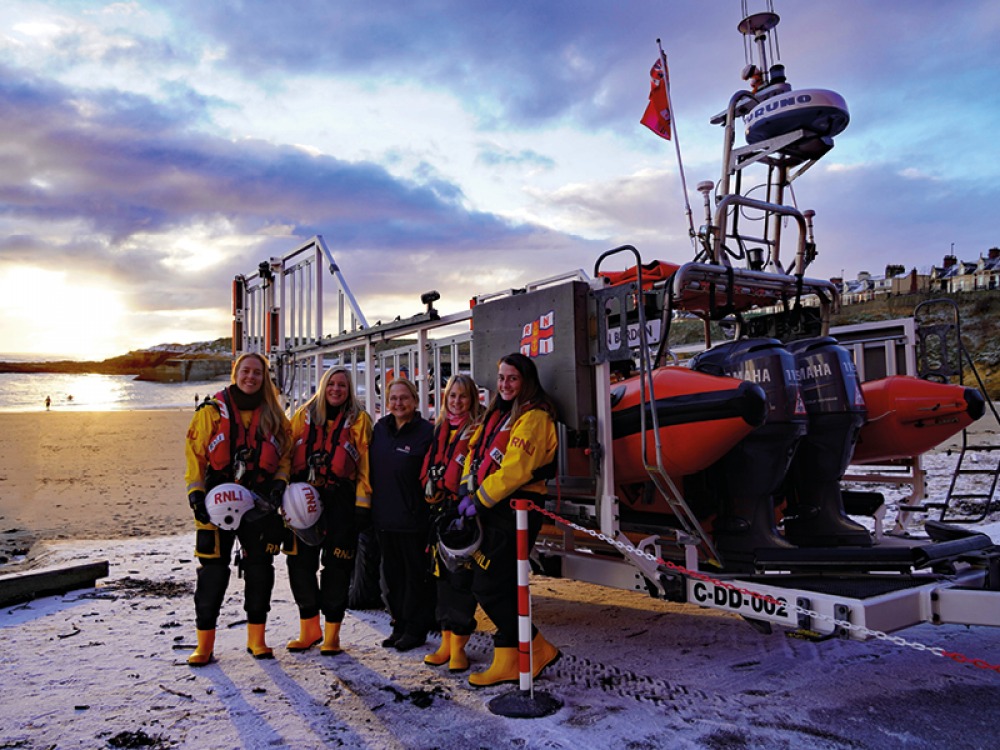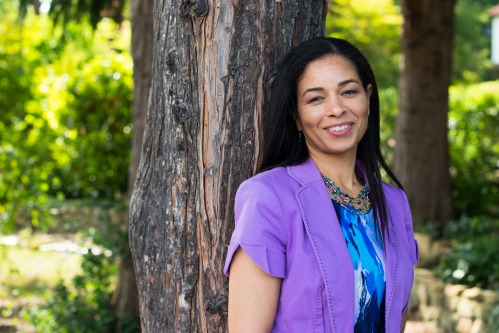Meet the First Female Helm at Cullercoats Lifeboat Station

After joining the RNLI at just 17, Anna Heslop has shown that it's not just men who can save lives at sea. Now appointed as Cullercoats Lifeboat Station's first female helm in its 170-year history, Anna is hoping to inspire more women to get involved
A popular location for families, beach-goers and more recently paddleboarders and open-water swimmers, there’s always something happening along the North East coast. And thanks to the team of RNLI volunteers, there is a ring of safety created around the area.
The RNLI take on all the challenges that the sea can throw at them. They are a 24-hour rescue service (no matter the weather) and their work is never predictable. However, the hard work and continuous training does pay off; in May 2021 Anna Heslop became the first female helm at the station in its 170-year history. ‘I joined the RNLI when I was 17 years old and before that I didn’t really know what the RNLI was at all,’ Anna explains. ‘I was walking my dog along the sea front just around the corner from Cullercoats, when I saw a young lad jump in the sea and start to get swept away. I ran along the promenade and I knew not to go in after him so threw him a life ring and called 999.’
At the time Anna didn’t know who to ask for, ‘I think I asked for the sea police,’ she laughs. But after being invited down to Cullercoats Lifeboat Station to have a look around with her friends and learn more about the RNLI, Anna’s passion was sparked. ‘They kept saying the lads, the guys, the men and I asked if they had any women on the crew and they laughed and said no. So I decided to join, and I think it’s the best thing I’ve ever done,’ she says.
Read More: Scarborough Surfing Coach on His Water Therapy Sessions and Love For the Waves

Anna asked what she needed to do to become a volunteer. ‘They said you need to be willing and live within a certain distance, so I thought I would give it a go,’ she says. A few days later Anna went back for a training exercise and she hasn’t left the RNLI in the decade since.
At Cullercoats the lifeboat crew is made up of four positions. ‘Volunteers go through a lot of training but if you turn up, work hard and respond when the pager goes (when you get given one), then you are going to help save lives,’ Anna explains. ‘You can’t just jump on the boat and be expected to know what to do. The training is continuous and as well as volunteering for the RNLI, my full-time job is being an assessor trainer. This means I go to different stations and train other crew on the lifeboats,’ she continues. ‘The world is updating, technology is updating and so are the boats, so we need to make sure that we are the best that we can be at all times, so that we’re giving the people we are rescuing the best chance, but also to make sure that we are bringing our crews back safely as well.’
Volunteering and training other crew members are not the only roles Anna has within the RNLI as she is now the first female helm for her station. ‘When I first started out I couldn’t even tie a knot, but now I’m able to take that lifeboat to sea with a crew who are potentially going to go on to rescue other people – it’s incredible,’ she says. ‘To think that I’m the first woman to do that at our station is quite an honour.’
Being a helm means Anna is in charge of the inshore lifeboat and her crew, making critical and lifesaving decisions. ‘The role is a little bit of everything. When I’m on call and there is a rescue needed, the boat will be going to sea and as the helm I take command. It also means that I might be the one who takes the boat out and trains the crew when we’re doing an exercise,’ she explains. ‘If you’ve been called out and you go down to the Lifeboat Station it doesn’t necessarily mean you will definitely be on that boat because we might have 20 people who turn up available. We need to make sure we have one helm and three crew ready to go, but we also need to have a tractor driver, someone land-based to authorise the launch and say “yes, that’s safe for you to go” and then we have shore crew, especially in the summer, to ensure that we can get the tractor and lifeboat safely through the crowds on the beach. There’s always plenty to do.’
Read More: Meet the 'Proud Teessider' Who Went from Teacher to Nutritional Therapist and Lost 12 Stone
As Cullercoat’s first female helm, Anna explains how she has had to overcome obstacles, particularly because she is a woman. ‘It would be naive of me to say that there haven’t been struggles, but I think with anything, when you lead the way, you’re going to come across hurdles. But there have always been others encouraging me along the way,’ she says. ‘I think one of the biggest difficulties was the shock that I was actually on the lifeboat in the first place because traditionally it has been the men on the lifeboat and the women have stayed ashore. When I have said to people that I am on the lifeboat, people have responded “but do you actually go out and do the rescues?” That was only 10 years ago, but now I don’t get that same shock [from people].’
When Anna passed as a helm and went on her first rescue out at sea it was a busy summer’s day. ‘When I came back up the beach [after the rescue] I took my helmet off as I was getting off the boat and there was a group of young girls who had come down to the beach with their families. One of the little girls turned around and said “the captain is a woman!” and the girls all stood up and shouted “girl power”. I was mortified because everyone started clapping, but the shock and excitement these little girls had on their faces was so lovely,’ she remembers.


Women now make up 10 percent of RNLI crews across the UK and the number is continuing to grow. At Cullercoats, Anna led the RNLI's first all-female crew at the start of the year, making history once more. ‘We have seven women involved at Cullercoats now, one of whom recently passed as full-crew, so we were able to do the training exercise as four women,’ Anna explains. ‘As long as we have a competent crew I don’t mind who is on the boat, but it happened to fall together so we were able to take four women out that day. I remember back when I joined the RNLI, one of the crew saying to me, “it’s really strange seeing a ponytail coming out the back of a helmet” and when we were out on this training exercise I was doing some boat handling training with the girls and I turned around to see three ponytails and I thought wow, I didn’t think I would ever see that,’ she recalls.
‘It’s really nice because female crew members aren’t unusual in the RNLI anymore,’ Anna says. ‘As I go around to a lot of different stations for my full-time job [training other RNLI volunteers] there seems to be women at every station, and that’s only growing,’ she adds.
As a helm Anna is not only responsible for the lifeboat and the hard decisions that need to be made out at sea, she is also responsible for the wellbeing of her crew. ‘The toughest part of the job is if we don’t find somebody. As a helm you’re responsible for a full crew and you feel responsible for firstly not being able to find somebody, but secondly for the mental wellbeing of your crew. We can’t always get everybody and we train and train and we do the best possible work that we can, but it’s a really sinking feeling when you come home and you’re not able to bring someone back,’ Anna explains.
Read More: Newcastle’s Vick Hope Joins Liz Earle as First Ever Celebrity Partner

However for Anna, the best part of the job, other than bringing people back to their families, is being able to see the hard work that her crew put in pay off. ‘For me, it’s to see my crew achieve. When I’ve trained them on something and I’ve seen the hard work they put in to develop as a crew member to then go out on a rescue and they’re able to put that training into practice and do it so well, that feeling can’t be described,’ she says.
Anna recalls one of her proudest rescues. ‘We got a call out last August to a paddleboarder around 400 metres off St Mary’s Island. St Mary’s is already pretty far out to sea and she was getting blown out by the wind. We launched within four minutes, going from being in bed to being on the boat, and we went to her last known location, but she wasn't there and we couldn’t see her. I made the decision to turn and follow the wind and she ended up around a mile off shore. We were able to pick her up and bring her back to shore. It felt like a textbook job, everything went right – the launch was perfect, the crew navigated me to exactly where we needed to be, we followed the wind, picked up the paddleboarder and brought her back. It was so calm, so simple, but nobody else was going to get her, nobody could see her from the land, so who would have recused her? It’s not complacency, it’s the training and my crew, who were fantastic.’
Having been involved in the RNLI for almost 10 years, Anna hopes to continue volunteering and making sure others can achieve within the role. ‘I really love seeing people come in who at the beginning can’t tie a knot like I couldn’t when I joined, and watching them become competent crew, as well as go on to become helms,’ she says. ‘I would love to see more women in leadership roles because, like I say, when I first started it was unusual to have women in the role in general.’
To find out more about how to volunteer or get involved with the RNLI, visit rnli.org
If people enter the water unexpectedly we teach Float to Live, which is a really big campaign we’re pushing throughout the RNLI at the moment. Make a starfish with your body rather than trying to swim straightaway so that you can control your breathing.
Paddleboarding and kayaking are on the rise, so if you’re going out, make sure you tell someone where you are going and take a phone in a waterproof pouch with you – make sure your phone is attached to you rather than your board so if you’re separated from your board you can call us. We would much rather come out and pick you up than do a search hours later because it’s probably going to be more successful.
If you’re going to the beach in summer, especially with young children, go to a lifeguarded beach because they are on hand in case anything does happen.
People who are going cold water swimming all year round should make sure they’ve got a buoy or float with them. You might get cramp in your leg and even if you’re the best swimmer in the world you can’t use your leg [if you get cramp]. Having a tow-float means you can hold onto it and let the cramp settle. A good rule of thumb for temperature is whatever the temperature is, that’s how many minutes to stay in the water – so if it’s four degrees in the water, don’t stay in longer than four minutes.










